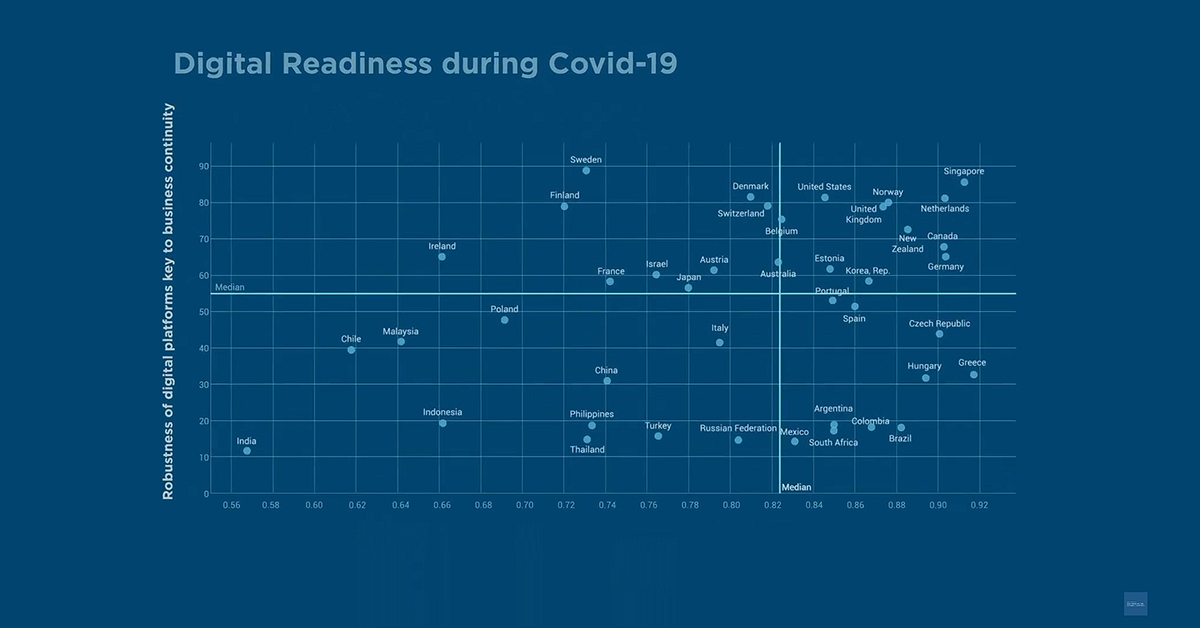Home > Off the Charts > Social Distance Readiness Benchmark
Video Summary: Social Distance Readiness Benchmark
As the world races to slow the spread of COVID-19, socially distant modes of working have become the norm. Whether a country is going into a lockdown or easing out of a lockdown countries have mandated different measures and continue to update them. The range of measures shown by governments around the globe suggest that policymakers are weighing a crucial trade-off: the economic cost of switching an economy to a socially distant mode against the benefits of slowing the pandemic’s spread and flattening its curve.
Key Observations and Insights
Countries have mandated vastly different measures in their efforts to flatten the curve of the COVID-19 pandemic. Some, such as India, mandated lockdown orders early, while others, including Singapore, were much more measured in implementing lockdown protocols. There are also a handful of countries, like Brazil, who’ve dismissed the need to enter a lockdown altogether. The range of measures suggest that policymakers are weighing a significant trade-off: the economic costs of switching an economy to a socially distant mode against the benefits of slowing the spread of COVID-19 and flattening the curve.
Digital Planet’s Social Distance Readiness Benchmark analyzes 42 countries on their digital and social distance readiness during the COVID-19 pandemic. While only part of any economy’s work can be done remotely, a team of researchers at Digital Planet asked the question: how prepared are countries across the world to work in a “socially distant mode”?
This mode would draw upon multiple digital platforms: using telecommunications and apps, such as Zoom and Skype, or, occasionally, Spatial, which specializes in meetings using holograms for organizing remote workers and exchanging information; using e-commerce to get provisions to remote workers as retail establishments are shut or curtailed; accessing digital media – especially those that can withstand a drop in advertising revenues — to keep people informed and make good business decisions.
However, having these platforms available is no guarantee that socially distant work gets done seamlessly. The Internet would need to be able to hold up to the spikes in digital traffic, especially with the simultaneous use of high-bandwidth applications, such as video conferencing and server capacities across multiple applications. In addition, a proliferation and use of digital money options would be essential to handle the surges in the need to make payments. To reduce the costs a country must incur by putting the face-to-face economy on pause, policymakers and technology companies must understand the gaps to be closed and best practices and benchmarks to guide action.








